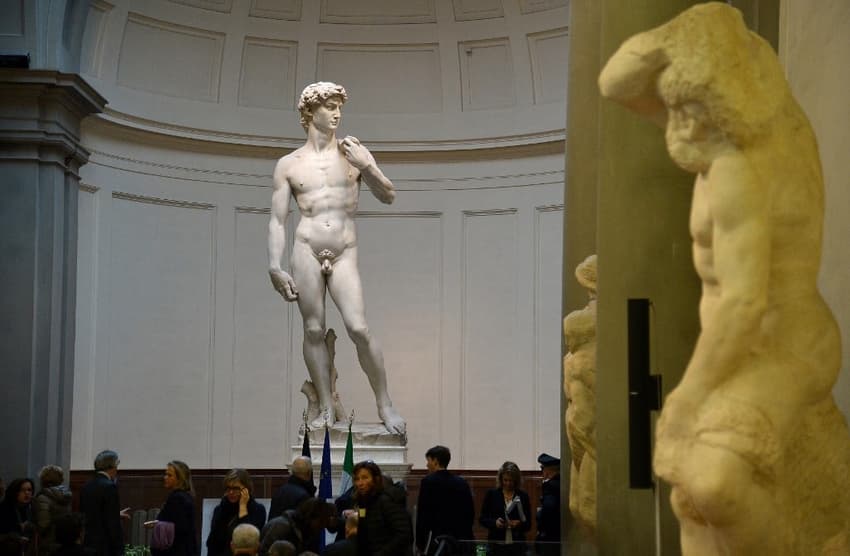What you need to know about Italy's free museum Sundays

Want to see the Colosseum or Michelangelo’s David for free? You can on Italy’s free museum Sundays.
If you're in Italy, you will be able to visit state-run museums for free on Sunday, May 5th, under the nationwide Domenica al Museo or ‘free museum Sundays’ scheme which allows entry without payment on the first Sunday of every month.
As tickets for major historical sites and museums in Italy often cost upwards of €10-15 per person, there are big savings to be made and the free Sundays scheme is understandably popular among both tourists and residents.
First introduced in 2014, the offer was suspended during the coronavirus pandemic amid concerns about crowding but reinstated in April 2022.
Where can I go?
The scheme applies to hundreds of state-run museums, archaeological parks and monuments, including world-famous sites like the Colosseum, Pompeii, Florence's Galleria dell'Accademia, the Reggia di Caserta and Trieste's Miramare Castle.
READ ALSO: How to get free access to Rome's museums with the MIC card
The offer does not apply to sites that are run by local authorities rather than the state, though many cities run similar initiatives of their own.
How do I book a free ticket?
In many cases you don’t need to and can simply turn up and walk in.
However, some venues such as Rome’s Galleria Borghese require advance booking, so it’s always wise to find the attraction’s website and check the rules before you go.
Will museums be crowded?
This really depends on where and when you go. Italy's most famous attractions always draw huge crowds - free entrance or otherwise - while lesser-known spots or those outside the major tourist areas will probably be less chaotic. But don't bank on it, as these dates are popular with Italians too.
Some sites capped visitor numbers when the scheme was initially reinstated in spring 2022, but it’s unclear how many still do this.
What else should I know?
You can find a full list of the sites participating in the scheme and links to further information on the Italian culture ministry’s website.
What are the remaining dates for this year?
The scheme will next run on: June 2nd, July 7th, August 4th, September 1st, October 6th, November 3rd and December 1st.
Comments
See Also
If you're in Italy, you will be able to visit state-run museums for free on Sunday, May 5th, under the nationwide Domenica al Museo or ‘free museum Sundays’ scheme which allows entry without payment on the first Sunday of every month.
As tickets for major historical sites and museums in Italy often cost upwards of €10-15 per person, there are big savings to be made and the free Sundays scheme is understandably popular among both tourists and residents.
First introduced in 2014, the offer was suspended during the coronavirus pandemic amid concerns about crowding but reinstated in April 2022.
Where can I go?
The scheme applies to hundreds of state-run museums, archaeological parks and monuments, including world-famous sites like the Colosseum, Pompeii, Florence's Galleria dell'Accademia, the Reggia di Caserta and Trieste's Miramare Castle.
READ ALSO: How to get free access to Rome's museums with the MIC card
The offer does not apply to sites that are run by local authorities rather than the state, though many cities run similar initiatives of their own.
How do I book a free ticket?
In many cases you don’t need to and can simply turn up and walk in.
However, some venues such as Rome’s Galleria Borghese require advance booking, so it’s always wise to find the attraction’s website and check the rules before you go.
Will museums be crowded?
This really depends on where and when you go. Italy's most famous attractions always draw huge crowds - free entrance or otherwise - while lesser-known spots or those outside the major tourist areas will probably be less chaotic. But don't bank on it, as these dates are popular with Italians too.
Some sites capped visitor numbers when the scheme was initially reinstated in spring 2022, but it’s unclear how many still do this.
What else should I know?
You can find a full list of the sites participating in the scheme and links to further information on the Italian culture ministry’s website.
What are the remaining dates for this year?
The scheme will next run on: June 2nd, July 7th, August 4th, September 1st, October 6th, November 3rd and December 1st.
Join the conversation in our comments section below. Share your own views and experience and if you have a question or suggestion for our journalists then email us at [email protected].
Please keep comments civil, constructive and on topic – and make sure to read our terms of use before getting involved.
Please log in here to leave a comment.